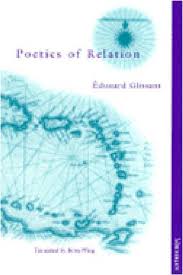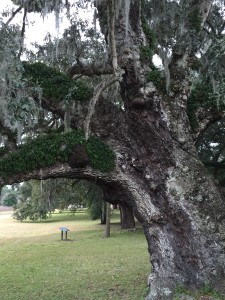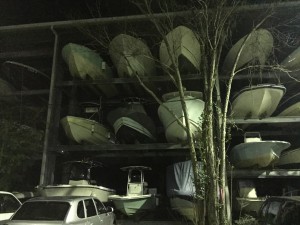Last weekend, a group of academics who were diverse in some ways – literary critics, historians, and anthropologists, from various locations and career stages – but less so in others – mostly white and male – lived and thought together in relative isolation at the College of Charleston. Were we maroons, building shared discourses in solidarity? Or were we marooned, stuck for a time at the southeast edge of Carolina?
The correct answer seems neither, since we were graciously hosted and were all able to fly off home when we wanted to. But the unstable opposition between marronage, which refers to the forming of free communities by escaped slaves and indigenous peoples in the New World, and maroonage, the experience of being cast away, structured our formal and informal conversations. The open question remains how these concepts best relate to each other.
The conference was convened by Joe Kelly, an Irish studies scholar turned early Americanist, and Rich Bodek, a Weimar historian with insatiably wide interests who gave a fascinating paper about L. Sprague de Camp’s Lest Darkness Fall, a counter-history in which a 20c scientist transported to 9c Rome attempts to save the Empire with technology.
The historians among us and especially the distinguished anthropologists Richard and Sally Price focused on maroon communities in the New World. The Prices have spent their careers in large part working with the Saramaka people, descendants of escaped slaves who live in the interior of Suriname. Rich’s powerful keynote lecture discussed this work and described his Saramakan collaborators as theorists and historians. (At the bar later, the Prices told me a harrowing story of evacuating their sick five year old daughter from a Saramakan village; I found the story especially moving because that daughter, now an English professor at Harvard, was a friend of mine in grad school in the late 90s.)
The literary contributions to the event were, as you might expect, more speculative. Joe Kelly and I both wrote about Bermuda, in particular the 1609 wreck of the Virginia Company ship Sea-Venture, which led to a group of 150 English colonists being marooned for ten relatively comfortable months, during which time a mutiny provided tantalizing clues about emerging ideas of political independence. Another literary panel explored utopian fiction, including science fiction, focusing on the positive visionary element of maroonage – which doubled back from sci fi to Bermuda via The Tempest and Forbidden Planet.
We kept circling around questions of active control and passive victimhood in our narratives and discourses. In my literary way, I wanted to categorize these modes through genre: the maroon story tells an epic tale of making a new homeland with interesting echoes of the Aeneid (which I’ll teach this week in Queens). It’s strange to think about Virgil’s epic, one of the dominant models for European imperialism, as providing a template for the struggle to forge Afro-Indigenous communities, especially since the Dido episode is often read (for example in Shakespeare’s Antony and Cleopatra) as a refusal of African alliances. But heroic maroons fit the epic mold, whether they are modern Saramakans preserving their earliest histories or the “maritime maroons” of Isaac Curtis’s research, who escaped from slave plantations in the Antilles to found independent societies on other islands. Recovering this heroic past has powerful political resonance in the present, as Eddie Shore’s project on quilombos in twentieth-century Brazil and Barry Stiefel’s on maroon monuments both show.
The passive genre that explores the castaway experience of maroonage is romance, an omnipresent literary form that perhaps lacks its Virgil – unless, like me, you think the Odyssey is more romance than epic. Romance narratives of survival from Heliodorus’s Aethiopian History to The Tempest and Robinson Crusoe champion different virtues than epic. Romance heroes and (more often than in epic) heroines display skills of indirection, endurance, interpretive acumen, even magic. Sometimes these narratives anticipate imperialist horrors; Crusoe technologizes his island while enslaving Friday, Prospero transforms his into dreams while brutalizing Caliban and dominating Ariel and Miranda.
The provisional separation between epic maroons and romance castaways does not capture anything like the flexibility of the narratives we tell about isolated communities forming and re-forming themselves after dislocation. I’ve written a book about romance indirection in the prose fiction of Elizabethan England, but more relevant to this past weekend’s conference, I think, is my more recent argument that shipwreck represents a literary-and-historical inflection point, a micro-narrative of crisis and disruption that opens up new possibilities. The maroon epic of settlement and community formation explodes out of slave-taking and revolt – which events aren’t (always) accompanied by actual shipwrecks, but which like shipwreck shatter old ways. Romances of castaways who endure and (sometimes) return home end up redeeming shipwreck, which becomes, in Northrop Frye’s resonant joke, nothing more than a “means of transportation” in this literary genre.
I end up thinking that the clear and important opposition between active marronage and passive maroonage, on which Rich Price insisted in his plenary lecture, conceals a meaningful second-level exchange between these modes. Heroic maroons from Saramaka to Jamaica to Brazil make use of romance tactics of rhetorical shaping, indirection, and concealment – as the extraordinary example of Rich’s local historian, interlocutor, and collaborator Tooy shows. (I devoured most of Travels with Tooy on my flight home – the instantaneous joys of the Kindle app!) Romance heroes and heroines from Shakespeare’s Miranda to Stephen Hopkins on Bermuda to the nameless woman who narrates Haushofer’s The Wall rely on romance tactics but also produce heroic substance – as Peter Sands’s reading of The Wall as ecofeminist parable shows. These modes are contrasting but never quite distinct; narrative culture, both historical and literary, operates through a constant shifting and competitive exchange between both modes. All maroons are recovering from being marooned; all castaways are struggling toward a new version of settlement, even if that settlement may be located in an (always changed, sometimes unrecognizable) Ithaca.
My own written contribution to the conference was “The Bermuda Assemblage,” an essay that sketched a theoretically post-human and explicitly non-human history of the English Bermuda settlement between the shipwreck of 1609 and the mid-1630s. At times I felt as if my essay ran tangentially away from some of the most interesting parts of the conference’s discussions, including the extraordinary reconstructions of maroon societies in the Lesser Antilles, Columbia, Suriname, Brazil, and elsewhere. To an extent, the four panels, plenary, and final roundtable kept literary and historical methodologies isolated; the opening panel explored speculative utopias, the second splashed onto Bermuda, and then after Friday lunch we turned from literature to historical marronage, and never really looked back.
Until the roundtable, it felt as if the borders between active marronage and passive maroonage were largely unbreached. In that final session, Sally Price and Robert Olwell suggested that the project of bringing the conference’s conversations “between two covers” (a metaphor for publication that, as Sally noted later, is dissolving in cyberspace) should involve reconsidering that division. I spoke my genre-piece then, as an admittedly lit crit-ish way to think about these two entwined narratives.
But what if instead of separating and distinguishing we choose accumulation and mixing?
For the past decade or so I’ve been fascinated with poet-theorist Edouard Glissant, in particular his notions of Relation and historical accumulation. He begins with the Middle Passage and with underwater glimpses of “womb abyss and infinite abyss” (8). He moves to accumulation: 
We no longer reveal totality within ourselves by lightning flashes. We approach it through the accumulation of sediments… (33)
In Shipwreck Modernity (2015), I connect Glissant’s poetic accumulation with Rachel Carson’s marine visions (9-10). I’m wondering now if the Franco-Caribbean writer’s models might bridge and mutually inform the ideas swirling in my head after this weekend’s trip to Charleston. Might maroons and the marooned meet on Glissant’s beach?
Thanks to Joe Kelly and Rich Bodek for organizing, and to all my fellow Marronage and Maroonage travelers! I look forward to continuing our conversations.



reminds me of bryan sykes work on tracing geographical migration of early ancestors and looking at how Polynesian peoples show dna evidence of being from europe and americas… That is, the longer evolution of homo sapiens speaks to how being “marooned” is part of our history as a species. in this instance, islands populations seem to be displaced from outside? wish I were there for this exchange. if papers or q and a posted, please let me know.
There’s a long-term plan for a volume, though I’m not sure exactly how that’ll play out. My essay on Bermuda is promised elsewhere, but I may try to write something new, or new-ish, for this group. It was a great event!
Hey, just saw this from more than a year ago, and as a I read along, I kept waiting for this to somehow appear in this article: The former athletic name for the College of Charleston was Maroons.